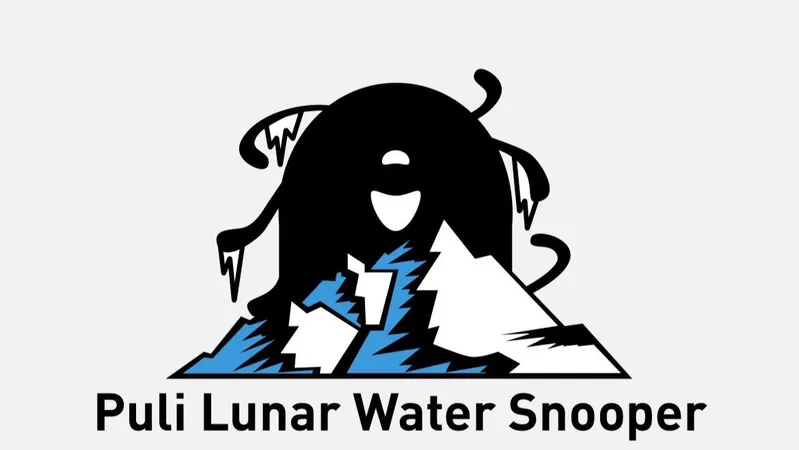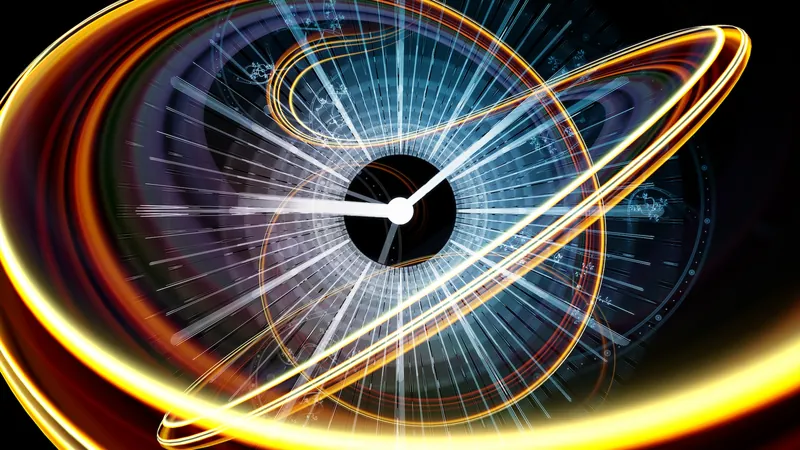
Hungary's Puli Space Takes Giant Leap in Moon Exploration through ESA Partnership – Discover the Future of Space Mining!
2025-01-16
Author: Wei Ling
Hungary's Puli Space Takes Giant Leap in Moon Exploration through ESA Partnership – Discover the Future of Space Mining!
In an exciting turn of events for space exploration, the European Space Agency (ESA) has forged a landmark partnership with Hungary's Puli Space Technologies to investigate the Moon's water resources. This collaboration marks ESA’s inaugural agreement for deep-space data collection with a Hungarian enterprise, showcasing the country's rising influence in the realm of space innovation.
The centerpiece of this mission is Puli Space’s cutting-edge Lunar Water Snooper (PLWS), a compact neutron spectrometer that will be launched as part of the upcoming Intuitive Machines IM-2 mission. Set to soar into the lunar skies as early as late February 2024, the IM-2 mission, spearheaded by the Houston-based private aerospace company, will deploy the PLWS to meticulously analyze water ice concentrations in the Moon’s South Pole region. Weighing a mere 400 grams, the PLWS will be integrated into the Micro Nova Hopper, an autonomous rocket-powered drone crafted by Intuitive Machines. This pioneering craft is designed for exploration in the Moon’s permanently shadowed craters, areas where temperatures can plummet to a staggering minus 200 degrees Celsius.
Tibor Pacher, the dynamic founder of Puli Space Technologies, expressed his enthusiasm: "We are thrilled to have ESA join this mission. Exploring the shadowed craters marks a significant step forward, as these regions are potential treasure troves of water ice that could revolutionize lunar exploration." The pursuit of water ice on the Moon is not merely a scientific endeavor but a necessity for fostering a sustainable human presence and economic activities in cislunar space. With water ice capable of being transformed into oxygen, potable water, and even rocket fuel, it is an essential resource for the establishment of lunar bases and expansive deep-space travel.
James Carpenter, Head of ESA’s Lunar Exploration Office, echoed this sentiment, stating, "The data from this mission could catalyze the development of sustainable lunar bases and an economical transportation system between Earth and the Moon."
What makes this mission particularly groundbreaking is its aim to map localized concentrations of water ice on the Moon's surface—a feat never attempted before. Previous orbital observations have indicated hydrogen presence; however, their spatial precision was inadequate for identifying potential mining locations. Puli Space’s spectrometer is set to fill this critical gap by providing vital insights into how and where water ice can be found, thereby opening doors to future lunar mining endeavors.
This collaboration illustrates a burgeoning trend where private companies play a pivotal role in space exploration. ESA’s partnership with Puli Space reflects a transformative shift toward incorporating commercial innovations into public research initiatives. With nations like the United States and China heavily investing in lunar exploration, often supported by private sector participation, the Moon has emerged as a central point of geopolitical and economic contest.
Once the data collected by Puli Space and Intuitive Machines undergoes standardization, it will be made available to the public, enhancing scientific knowledge and facilitating future missions. ESA noted, "This milestone sets the stage for deeper cooperation between government agencies and private firms, paving the way for further breakthroughs in space exploration."
Overall, this mission not only represents a crucial step toward advancing our understanding of lunar water resources but also lays the groundwork for potential in-situ resource utilization (ISRU). By providing concrete data on water ice, this project could catapult future lunar mining operations and make sustained human activity beyond the Earth’s atmosphere a tangible reality. As we gear up for this monumental endeavor, the possibilities for human civilization in space seem boundless! Are you ready for the next giant leap?



 Brasil (PT)
Brasil (PT)
 Canada (EN)
Canada (EN)
 Chile (ES)
Chile (ES)
 Česko (CS)
Česko (CS)
 대한민국 (KO)
대한민국 (KO)
 España (ES)
España (ES)
 France (FR)
France (FR)
 Hong Kong (EN)
Hong Kong (EN)
 Italia (IT)
Italia (IT)
 日本 (JA)
日本 (JA)
 Magyarország (HU)
Magyarország (HU)
 Norge (NO)
Norge (NO)
 Polska (PL)
Polska (PL)
 Schweiz (DE)
Schweiz (DE)
 Singapore (EN)
Singapore (EN)
 Sverige (SV)
Sverige (SV)
 Suomi (FI)
Suomi (FI)
 Türkiye (TR)
Türkiye (TR)
 الإمارات العربية المتحدة (AR)
الإمارات العربية المتحدة (AR)